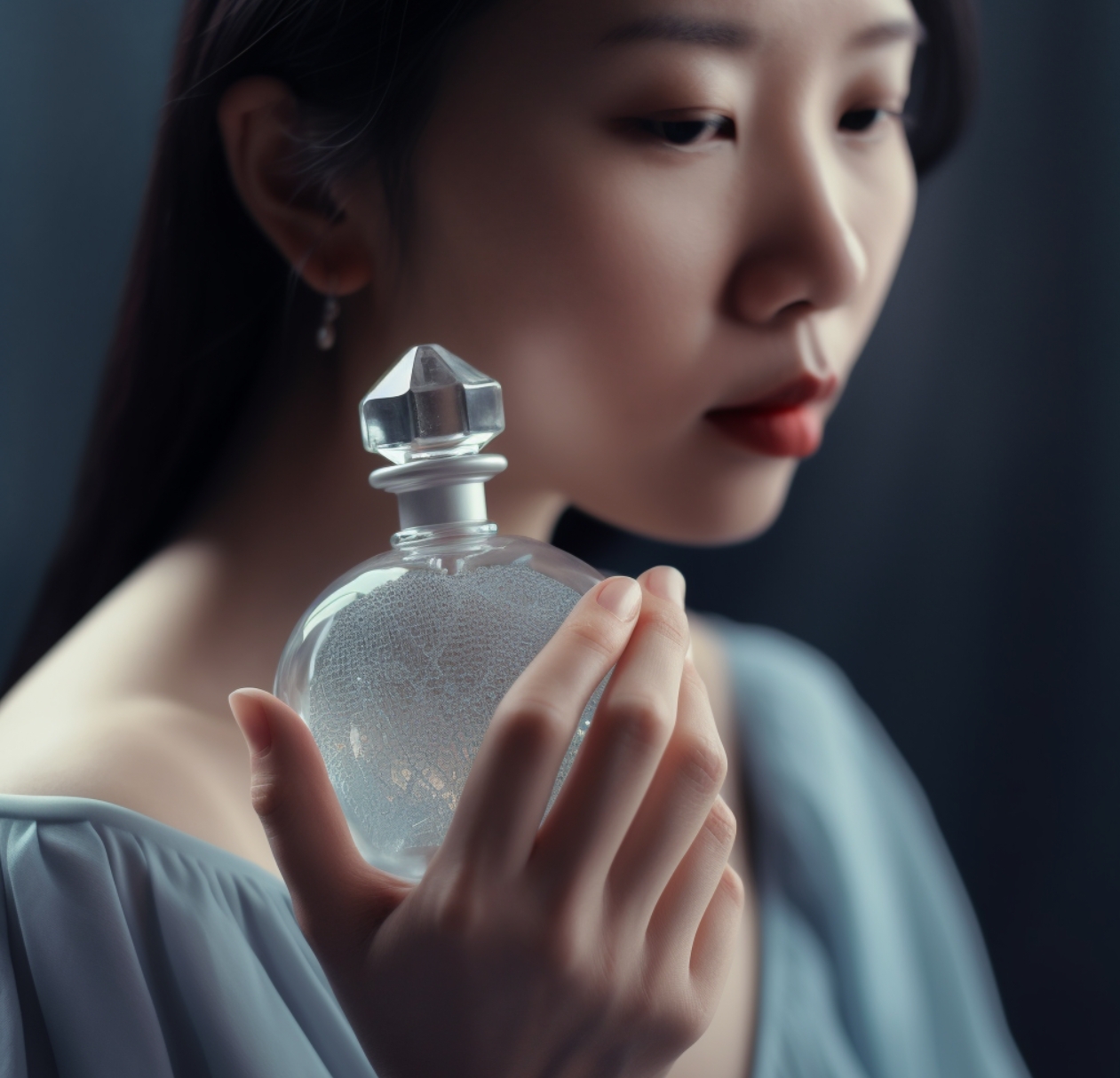When it comes to fragrances, choosing the perfect scent can be a daunting task. There are countless options available on the market, each with its unique blend of notes and ingredients. But did you know that your choice of scent can actually say a lot about your personality and style? In this comprehensive guide, we’ll explore the fascinating world of fragrances, help you understand the different fragrance families, and offer tips for finding the perfect scent that truly reflects your personality and style.
The History of Fragrances
Fragrances have been used for various purposes throughout history, such as religious rituals, medicinal purposes, and personal adornment. Here are some key historical milestones in the world of fragrances:
- Ancient Egyptians used fragrances in religious ceremonies and embalming practices. They also wore solid perfumes made from a mixture of fat and fragrant ingredients.
- In ancient Greece, fragrances were used for both personal and public purposes. Athletes were anointed with scented oils, and public buildings were fumigated with fragrant substances.
- The Romans were known for their love of fragrances and used them to scent their baths, clothes, and even their horses. They also imported a vast array of fragrant ingredients from distant lands.
- During the Middle Ages, the use of fragrances declined due to religious restrictions. However, they made a comeback during the Renaissance, when perfume-making became a highly regarded art form.
Fragrance Concentrations: Eau de Parfum, Eau de Toilette, and More
Fragrances come in various concentrations, which affect their longevity and intensity. Here are the most common types of fragrance concentrations:
- Parfum or Pure Perfume: The highest concentration, containing 20-30% perfume oil. These fragrances typically last the longest and have the most potent scent.
- Eau de Parfum (EDP): With a concentration of 15-20% perfume oil, EDPs are a popular choice for everyday wear due to their balance of longevity and intensity.
- Eau de Toilette (EDT): A lighter concentration, containing 5-15% perfume oil. EDTs are perfect for daytime use or those who prefer a more subtle scent.
- Eau de Cologne (EDC): The lightest concentration, with only 2-4% perfume oil. EDCs are ideal for a quick, refreshing burst of fragrance but typically have a shorter lifespan.
Signature Scents vs. Fragrance Wardrobe
Some people prefer to have a single signature scent that they wear consistently, while others enjoy having a fragrance wardrobe with multiple scents for different occasions, moods, or seasons. Here are some tips for building a versatile fragrance wardrobe:
- Start with a basic collection of fragrances that cover each of the main fragrance families: floral, oriental, woody, and fresh.
- Consider adding seasonal scents, such as lighter fragrances for spring and summer and warmer, richer scents for fall and winter.
- Explore niche or indie fragrances to discover unique, less mainstream scents that can add variety to your collection.
- Rotate your fragrances to prevent olfactory fatigue and keep your scent experience fresh and exciting.
Fragrance Layering
Layering fragrances involves combining multiple scents or scented products to create a unique and personalized scent experience. Here are some tips for successful fragrance layering:
- Start with a scented body wash or soap to create a clean and fragrant base.
- Apply a matching or complementary scented body lotion or oil to help lock in the fragrance and provide a longer-lasting scent.
- Spray your chosen fragrance onto your pulse points, such as your wrists, neck, and behind your ears, for a concentrated and long-lasting effect.
- Experiment with combining different fragrances from the same or complementary fragrance families to create a customized scent that’s uniquely yours.
Fragrance Families: A Roadmap to Your Perfect Scent

To make the process of selecting a fragrance easier, scents are generally categorized into fragrance families based on their dominant notes and characteristics. Understanding these families can help you navigate the world of fragrances more confidently and ultimately find the perfect scent that matches your personality and style.
1. Floral
The most popular fragrance family, floral scents are characterized by their bouquet of flowers. Ranging from delicate and romantic to bold and exotic, these scents are perfect for those who love a touch of femininity and sophistication in their fragrances. Floral fragrances can be further divided into subcategories like single florals, which focus on a specific flower, and floral bouquets, which combine multiple floral notes.
- Single Florals: These fragrances focus on a specific flower, such as rose, jasmine, or gardenia. They can evoke a sense of purity and simplicity, highlighting the beauty and complexity of an individual floral note. Examples include Frédéric Malle’s “Portrait of a Lady” (rose) and Chanel’s “Gardenia”.
- Floral Bouquets: Floral bouquets combine multiple floral notes to create a harmonious, well-rounded scent. These fragrances often represent a more sophisticated and elegant approach to floral scents, as the different flowers can complement and enhance each other. Examples include Lancôme’s “Trésor” and Estée Lauder’s “Beautiful”.
- Fruity Florals: Fruity floral fragrances add a touch of sweetness and playfulness to the mix by incorporating notes of fruits like berries, peaches, and citrus. These scents are perfect for those looking for a more youthful and vibrant take on floral fragrances. Examples include Viktor & Rolf’s “Flowerbomb” and Marc Jacobs’ “Daisy”.
- Green Florals: Green florals emphasize the fresh, crisp aspect of flowers, often featuring notes of leaves, grass, or stems. These fragrances can evoke a sense of being surrounded by nature and are perfect for those who appreciate a more organic, earthy interpretation of floral scents. Examples include Chanel’s “No. 19” and Gucci’s “Bloom”.
- Powdery Florals: Powdery floral fragrances incorporate soft, velvety notes like iris, violet, or orris root, creating a cozy, comforting atmosphere. These scents are ideal for those who enjoy a more subdued, intimate take on floral fragrances. Examples include Guerlain’s “L’Heure Bleue” and Prada’s “Infusion d’Iris”.
2. Oriental
Oriental fragrances are known for their rich, sensual, and exotic notes. These scents often feature a blend of warm spices, amber, and resinous elements, making them perfect for those who have a bold, adventurous, and mysterious personality. Oriental fragrances can be further categorized into spicy orientals, which focus on spices like cinnamon and clove, and amber orientals, which emphasize sweet, warm notes like vanilla and tonka bean.
Some key characteristics of Oriental fragrances include:
- Opulence and warmth
- Sensual, enveloping notes
- A strong, long-lasting presence
Oriental fragrances can be further categorized into several subcategories, each with its distinct features and ingredients:
- Spicy Orientals: These fragrances focus on spices like cinnamon, clove, cardamom, and nutmeg, often combined with sweet or balsamic notes. Spicy Orientals evoke an air of mystique and seduction, making them perfect for evening wear or special occasions.
- Amber Orientals: Also known as “Ambery” or “Gourmand” fragrances, these scents emphasize sweet, warm notes like vanilla, tonka bean, caramel, and praline. Amber Orientals are known for their comforting and delectable qualities, often reminiscent of delicious desserts.
- Florientals: A fusion of floral and oriental notes, Florientals offer a perfect balance between the exotic allure of oriental fragrances and the romantic elegance of florals. Common ingredients include jasmine, tuberose, ylang-ylang, and orange blossom, combined with warm spices, amber, and musk.
- Woody Orientals: This subcategory combines the depth and warmth of woody notes with the opulence of oriental ingredients. Woody Orientals often feature sandalwood, oud, patchouli, or vetiver, blended with spices, amber, or sweet notes to create a sophisticated, multifaceted scent.
3. Woody
Woody fragrances are built around notes of woods, moss, and earthy elements. These scents evoke a sense of warmth, depth, and masculinity, making them an excellent choice for those with a strong, confident, and grounded personality. Woody fragrances can be subdivided into dry woods, which include notes like cedar and vetiver, and mossy woods, which feature oakmoss and patchouli.
Key characteristics of Woody fragrances include:
- Earthy, grounding tones
- A natural, outdoorsy feel
- Longevity and a strong presence
Woody fragrances can be subdivided into several subcategories, each with its distinct features and ingredients:
- Dry Woods: These fragrances are characterized by notes like cedar, vetiver, and guaiac wood, creating a dry, sophisticated scent. Dry Woods often evoke a sense of refinement and are ideal for those who appreciate understated elegance.
- Mossy Woods: Also known as “Chypre” fragrances, Mossy Woods feature oakmoss, patchouli, and other green, earthy elements. These scents can be mysterious and alluring, with a touch of classic sophistication.
- Aromatic Woods: Aromatic Woods combine the depth of woody notes with the freshness of aromatic herbs like lavender, rosemary, and sage. These fragrances strike a balance between warmth and invigoration, making them versatile and appealing to a wide range of personalities.
- Woody Oriental: This subcategory blends the opulence of oriental notes with the depth of woody elements. Woody Oriental fragrances often include ingredients like sandalwood, oud, or amber, combined with spices and sweet notes to create a rich, complex scent.
4. Fresh
Fresh fragrances are characterized by their light, crisp, and invigorating notes. They often feature citrus, green, and aquatic elements, making them an ideal choice for those with an energetic, carefree, and outgoing personality. Fresh fragrances can be further divided into citrus, which focuses on zesty, tangy notes, green, which highlights grassy, herbal notes, and aquatic, which captures the essence of water and the ocean.
Key characteristics of Fresh fragrances include:
- Clean and revitalizing notes
- A sense of brightness and energy
- Versatility for various occasions and climates
Fresh fragrances can be further divided into several subcategories, each with its unique set of notes and characteristics:
- Citrus: These fragrances focus on zesty, tangy notes such as lemon, bergamot, grapefruit, and orange. Citrus scents are often combined with other light, fresh notes like neroli, petitgrain, or verbena, creating a lively and invigorating fragrance experience.
- Green: Green fragrances highlight grassy, herbal, and leafy notes, reminiscent of a walk in the park or a freshly mown lawn. Key ingredients can include green tea, basil, mint, and galbanum. These scents evoke a sense of nature and the outdoors, perfect for those who appreciate a clean, earthy aroma.
- Aquatic: Also known as “marine” or “ozone” fragrances, aquatic scents capture the essence of water and the ocean. Common ingredients include sea salt, water lily, seaweed, and calone, a synthetic molecule that mimics the smell of fresh sea air. These fragrances are ideal for those who love the refreshing and tranquil qualities of water.
- Fruity: Fruity fragrances are characterized by their juicy, sweet, and sometimes tangy notes, such as apple, peach, berries, or tropical fruits. They often blend well with floral or citrus notes, creating a playful, lighthearted scent perfect for those with a youthful and vibrant spirit.
How to Choose the Perfect Scent for Your Personality & Style

Now that you have a basic understanding of the different fragrance families, it’s time to delve into the process of finding the perfect scent that complements your personality and style. Here are some tips to guide you on your fragrance journey:
1. Identify Your Scent Preferences
Begin by reflecting on the scents you’re naturally drawn to. Do you prefer light, fresh notes or rich, warm ones? Are you captivated by the allure of exotic spices or the sophistication of a classic floral bouquet? By pinpointing your preferences, you’ll have a clearer direction when exploring the various fragrance families. Some questions to ask yourself:
- What scents evoke positive memories or emotions for you?
- Which fragrances do you find yourself gravitating towards in everyday products like candles, soaps, or body lotions?
2. Consider Your Personality
Think about your personality traits and how they can be translated into a fragrance. Here are some suggestions for matching your personality type with a fragrance family:
- Confident and bold: Oriental or woody scents that leave a lasting impression
- Introverted and thoughtful: Delicate floral or fresh scents that express your true essence
- Romantic and dreamy: Soft, sweet floral or gourmand scents that evoke love and passion
- Adventurous and spontaneous: Citrus or fruity scents that convey a sense of energy and excitement
3. Factor in Your Style
Your personal style is another important aspect to consider when selecting a fragrance. Here are some style inspirations and their corresponding fragrance suggestions:
- Timeless elegance: Classic floral or woody scents that exude sophistication
- Edgy and unconventional: Unique, unexpected fragrances that make a statement
- Minimalist and modern: Clean, crisp scents that reflect simplicity and understated elegance
- Bohemian and artistic: Earthy, natural fragrances that evoke a sense of freedom and creativity
4. Test Before You Buy
It’s essential to try a fragrance on your skin before committing to a purchase, as scents can smell different on each individual due to variations in body chemistry. When testing a fragrance, follow these steps:
- Apply the fragrance to your wrist or inner elbow, as these pulse points generate warmth that helps to develop the scent.
- Wait for at least 30 minutes to allow the fragrance to settle and reveal its true character.
- Assess how the scent has evolved on your skin, taking note of the harmony between the top, heart, and base notes.
5. Trust Your Instincts
Ultimately, the perfect scent is one that makes you feel confident, happy, and authentically yourself. Trust your instincts, and don’t be swayed by trends or the opinions of others. Your fragrance should be a personal expression of who you are, so choose a scent that resonates with you on a deeper level.
Fascinating Fragrance Facts: Market Insights and Consumer Preferences
- Market Size: The global fragrance market was valued at approximately USD 32.4 billion in 2020 and is expected to reach USD 43.6 billion by 2027, growing at a CAGR of 4.4% from 2021 to 2027 (Source: Allied Market Research).
- Fragrance Preferences: According to a survey conducted by Statista in 2020, 39% of respondents in the United States preferred fresh and fruity scents, 34% favored floral scents, 15% opted for woodsy or earthy scents, and 12% chose oriental or spicy scents.
- Gender Differences: A study published in Frontiers in Psychology found that women tend to have a stronger preference for sweet, fruity, and floral scents, while men typically prefer woodsy, musky, and fresh scents.
- Signature Scents: In a survey conducted by FragranceX, 55% of respondents reported having a signature scent, while 45% said they did not have a specific scent that they would consider their “signature.”
- Influence of Personality: A study published in the Journal of Sensory Studies found that there is a correlation between personality traits and fragrance preferences. For example, individuals with higher levels of openness to experience were more likely to enjoy complex and unusual scents, while those with higher levels of conscientiousness preferred simpler, more traditional scents.
These statistics highlight the diversity of fragrance preferences among consumers, emphasizing the importance of finding a scent that aligns with your unique personality and style.
FAQs
How do I know which fragrance family suits me best?
Start by reflecting on the scents you’re naturally drawn to and consider how they align with your personality and style. You can explore different fragrance families and test samples on your skin to see how they evolve and resonate with you.
How do fragrances change on my skin?
Fragrances change on your skin due to factors like body chemistry, temperature, and pH levels. As a scent develops, the top notes will gradually give way to the heart and base notes, which can alter the fragrance’s overall character.
How can I make my fragrance last longer on my skin?
To make your fragrance last longer, apply it to your pulse points, such as your wrists, neck, and behind your ears, where the warmth of your body can help to develop the scent. You can also layer your fragrance with complementary scented body lotions or oils to enhance its longevity.
Can I wear more than one fragrance at a time?
Yes, you can layer different fragrances to create a unique, personalized scent. However, it’s essential to ensure that the fragrances you choose complement each other and don’t create an overpowering or conflicting aroma.
How often should I update my fragrance wardrobe?
There’s no specific rule for updating your fragrance wardrobe, as it depends on your personal preferences and how often you like to try new scents. Some people may stick to their signature scent for years, while others may enjoy changing their fragrance with the seasons or to suit different moods and occasions.
Can I wear the same fragrance for both day and night?
You can wear the same fragrance for both day and night if it makes you feel confident and comfortable. However, some people prefer to have a lighter, fresher scent for daytime wear and a more intense, sensual scent for evening occasions.
How should I store my fragrances to ensure they remain fresh?
To preserve the quality of your fragrances, store them in a cool, dark place away from direct sunlight and temperature fluctuations. It’s also best to keep the bottles tightly closed when not in use to prevent evaporation and oxidation.


Leave a Reply